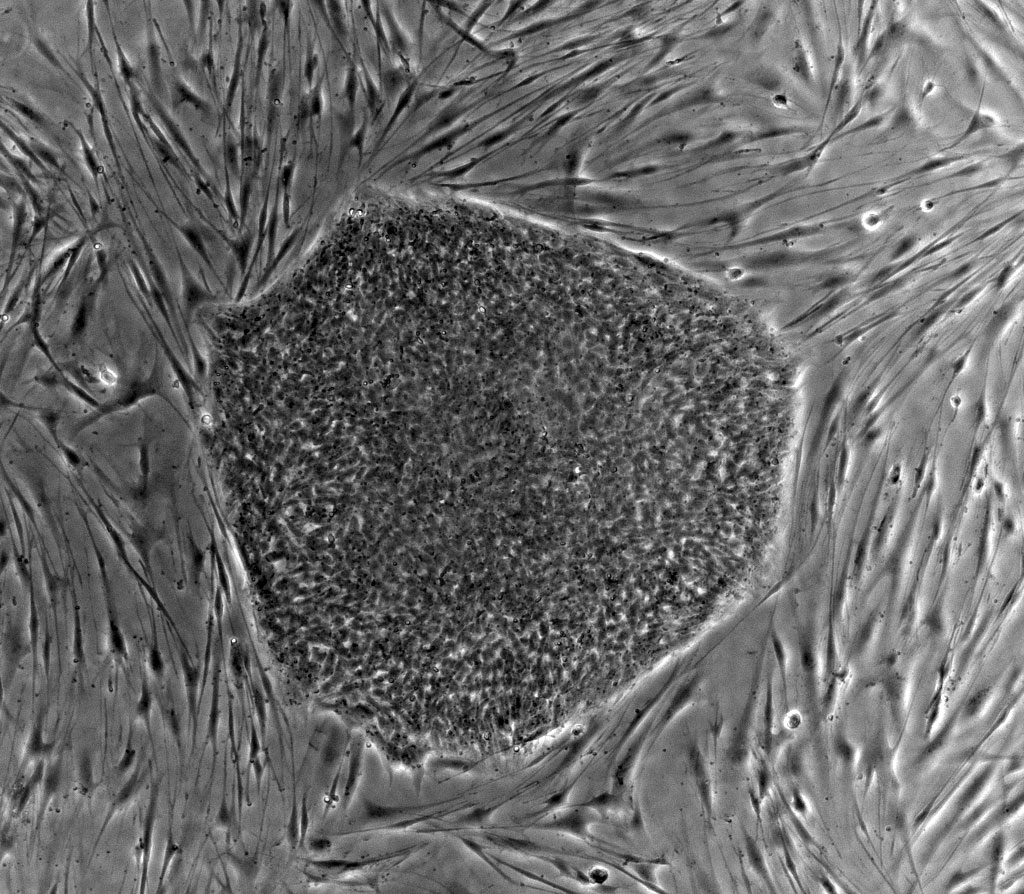 Earlier this week we wrote about medical treatments that use stem cells derived from aborted fetal remains. Today we want to focus on vaccines that utilize similar methods.
Earlier this week we wrote about medical treatments that use stem cells derived from aborted fetal remains. Today we want to focus on vaccines that utilize similar methods.
In order to produce a vaccine, scientists must first propagate large quantities of the virus against which the vaccine will be used.
One way to propagate the virus is to allow it to spread throughout a tissue culture in a lab. While any number of types of tissue or cells can be used—including animal cells or yeast cultures—for many viruses, sometimes researchers choose to use cells derived from human beings—specifically aborted fetal remains.
From the 1960s to the 1980s cells from various aborted human fetuses were obtained by scientists for the purpose of medical research. Researchers kept the cells alive to be multiplied under laboratory conditions. As the cell cultures multiplied, they were made available to other scientists for research and development.
In the U.S., vaccines for measles and rubella; chickenpox; and shingles are all manufactured using cells derived from aborted fetal remains. Other vaccines may be manufactured using cells derived from aborted fetal remains, depending on the methods used by the vaccine’s producers.
A Brief History Lesson with PepsiCo
In 2011 and 2012 PepsiCo was at the center of a controversy over the use of aborted human remains in testing Pepsi products. The allegations were that the company with which PepsiCo contracted for research and development tested flavor enhancers using cells known as HEK-293.
“HEK-293” stands for “Human Embryonic Kidney 293.” It is a cell line obtained from the kidneys of a baby aborted in 1973.
In response, PepsiCo amended its contract with the research company to ensure human tissue was not used in the research process.
While PepsiCo did the right thing, the situation highlighted a side of abortion that many people do not want to acknowledge: That aborted fetal remains are used for scientific research.
How Can Aborted Fetal Remains be Used for Research?
In a nutshell, scientists have developed methods to preserve and “grow” human cells in tissue cultures.
Cells taken from, for example, a cancerous tumor can be preserved, multiplied in a laboratory, and then used for cancer research.
The problem is some scientists do the same thing with cells obtained from aborted fetal remains. In the case of HEK-293, scientists took cells from the aborted child’s kidney; grew the cells in a tissue culture in which the cells multiplied; and then began using the cells for scientific research.
This raises a number of ethical issues. Pro-life advocates have long opposed embryonic stem cell research, because it involves the death of human embryos and it treats human beings like expendable material that can be cloned and killed in the name of science. Scientific research using aborted human remains operates on much the same principle: Rather than treat the remains of an unborn human being with respect and dignity, it treats them as though they are no more significant than a bacteria culture, and it helps justify abortion in the minds of some.
How do Vaccines Use Aborted Fetal Remains?
How are vaccines utilizing aborted fetal remains? Here’s how it works:
Vaccines in General: When a person is vaccinated against a virus, doctors inject them with a form of the virus in order to inoculate them. The virus may be inactive or modified to prevent the person from actually contracting the virus. The goal is to trigger the person’s immune system.
The body begins developing antibodies against the virus in the vaccine, thus preventing the person from actually contracting the virus in the future.
How Vaccines Use Tissue Cultures: In short, tissue cultures are like food for the virus that will go into the vaccine.
Scientists infect tissue cultures in a lab with a virus. The virus spreads throughout the cells, giving scientists a large batch of the virus which can be used for vaccinations. It’s a little like growing plants in a bed of potting soil–with the tissue culture acting like potting soil for the virus.
Many vaccine manufacturers use yeast or animal tissue to propagate viruses for vaccines. However, some companies use human tissue.
Why Some Vaccines Use Aborted Fetal Remains: Viruses specific to humans—like chickenpox, mumps, and rubella—grow most readily in human tissue cultures. For this reason, scientists use cells derived from aborted fetal remains to cultivate the viruses.
The University of Oxford’s Vaccine Knowledge Project writes,
“For some vaccines, the active ingredient has to be grown in laboratories on cultures that contain human cell-lines. This is because the viruses are specific to humans and will only grow in human cells….
The cell-lines used (called WI-38 and MRC-5) were started in the 1960s using small quantities of lung cells taken from two aborted foetuses. The abortions were legal and agreed to by the mothers, but they were not performed for the purpose of vaccine development. The original foetal cells have long since disappeared. Because these cell-lines still exist nearly 50 years later, no other foetuses are needed to make human cell-lines for growing these vaccine viruses.
“Some people may have concerns about using a vaccine produced using foetal tissue, even though the original cells do not exist any longer.”
In particular, researchers have used the following cell lines obtained from aborted fetal remains:
- HEK-293: Obtained from the kidney of a healthy fetus aborted in 1973.
- WI-38: Obtained from the lungs of a healthy, three-month-old fetus aborted in the 1960s.
- MRC-5: Obtained from the lungs of a baby aborted at 14 weeks in 1966.
- IMR-90: Obtained from the lungs of a baby aborted around 1975.
- PER.C6®: Obtained from the retina of a baby electively aborted in 1985.[1] [2]
These are not the only cell lines derived from aborted fetal remains, but they are some of the more common.
WI-38 and MRC-5 are the cell lines most commonly used in vaccines. However, Crucell, the makers of PER.C6® write,
“PER.C6® technology supports the growth of a wide variety of human disease-causing viruses that can subsequently be processed into vaccines. It can be used for the manufacturing of inactivated whole virus, live-attenuated, live-vector, split and subunit vaccines. PER.C6® technology also allows for efficient production of recombinant vaccines. …
“Many of Crucell’s pipeline products are based on its PER.C6® technology. These include:
-
Ebola vaccine
-
Influenza vaccine
-
Malaria vaccine
-
Tuberculosis vaccine
-
Rabies antibody combination”
Do the Vaccines Actually Contain Aborted Human Remains?
It depends on who you ask.
After the virus has spread throughout the tissue culture, scientists are supposed to purify it so all that remains is the virus and no cells derived from aborted fetal remains are left. However, some believe residue from the tissue culture may still be left behind in small quantities within the vaccines.
Again, the University of Oxford’s Vaccine Knowledge Project writes,
“For some vaccines, the active ingredient has to be grown in laboratories on cultures that contain human cell-lines…Once grown, the viruses are purified several times to remove the cell culture material.
“The cell-lines used (called WI-38 and MRC-5) were started in the 1960s using small quantities of lung cells taken from two aborted foetuses.”
Regardless of whether the final vaccines actually contain aborted fetal remains, there is little doubt vaccines are manufactured using tissue derived from aborted fetal remains.
Which Vaccines Utilize Aborted Fetal Remains?
According to Children of God for Life and the University of Oxford, vaccines available in the U.S. and U.K. for the following diseases are manufactured using cells derived from aborted fetal remains:
- Chickenpox
- Measles and Rubella
- Shingles
Vaccines for the following diseases may be manufactured with cells derived from aborted fetal remains, depending on the pharmaceutical company:
- Hepatitis A & B
- Hepatitis A & Typhoid
- Polio
- DTaP, Polio, and HiB vaccines
- Rabies
- Smallpox
In the case of diseases like chickenpox, there appear to be no options for Americans: If you get the vaccine, it will have been manufactured using cells derived from aborted fetal remains. In the case of Polio and DTaP vaccines, however, you will need to do some research.
How Can I Know if a Vaccine is Made Using Aborted Fetal Remains?
Again, vaccines in the U.S. against measles, rubella, chickenpox, and shingles all are manufactured using tissue derived from aborted fetal remains.
For the other vaccines, Children of God for Life has put together a table showing which vaccines and companies use cell lines from aborted fetal remains and which use other media—such as animal tissue or yeast cultures.
Does this Mean We Should Not Vaccinate Our Children?
Family Council has always viewed vaccination as something families should decide for themselves based on their own convictions.
According to our research, none of the seasonal flu shots approved for the 2014-2015 flu season were manufactured using cell lines derived from aborted fetal remains.
Additionally, there are many vaccines that are not manufactured using aborted fetal remains; a person seeking a vaccine simply has to do some research on which vaccines those are, and then find a healthcare professional that offers those vaccines.
The only vaccines we are aware of in the U.S. that are made exclusively with tissue derived from aborted fetal remains are vaccines for chickenpox, measles and rubella, and shingles.
There are respected Christians who say it is OK for people to use these vaccines since no alternatives exist; and there are respected Christians who say people ought to boycott these vaccines until researchers develop and approve more ethical alternatives.
Regardless, whether or not it is ethical to receive these vaccines when no other options are available, scientific research and development that capitalizes on aborted fetal remains raises serious ethical questions and should be avoided in favor of methods that are unquestionably conscionable.
[1] http://www.ncbi.nlm.nih.gov/pubmed/16566451
[2] http://www.fda.gov/ohrms/dockets/ac/01/transcripts/3750t1_01.pdf




